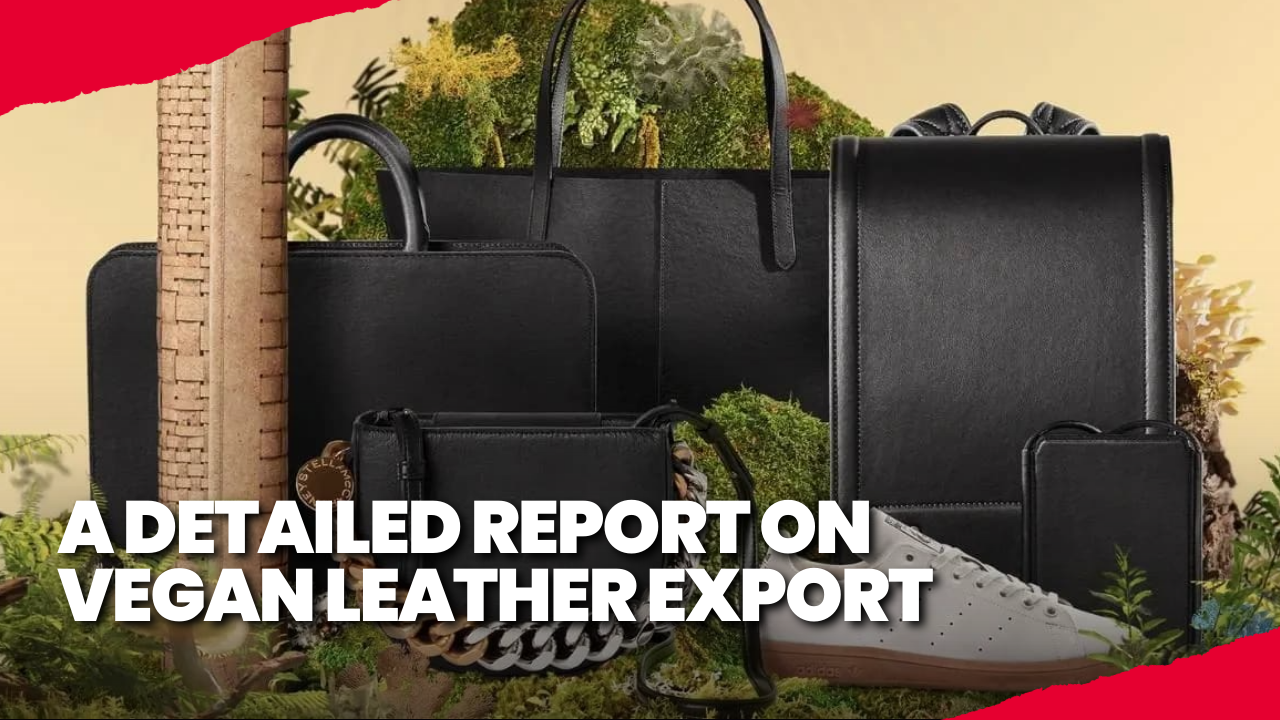
The specific HS code for vegan leather depends on the product type and its composition. While there isn’t a single HS code for all vegan leather.
- HS Code 590320: for synthetic leather fabrics
- HS Code 4202: for articles made from synthetic materials, including vegan leather items like suit-case, bags, boxes, and wallets.
- HS Code 4203: for garments made from synthetic leather.
- HS Code 6404: for Articles of footwear.
What is Vegan Leather?
Vegan leather, also known as Plant-based leather or eco-leather, is a type of material made from plant-based sources as an alternative to traditional leather, which is typically made from animal hides. Plant-based leather can be made from a variety of sources, including pineapple leaves, mushrooms, corn, apple peels, and recycled plastic
However, the majority of vegan leather is made out of polyvinyl chloride (PVC) and polyurethane (PU), both of which are petroleum-based plastics.
But as long as the leather isn’t derived from any animal products (there are some alternatives that are not animal hide but still bio-based, made from materials like discarded shrimp exoskeletons), it can be considered vegan.
Types of Vegan Leather
The versatility of vegan leather is evident in the array of materials used in its production. Each type offers unique characteristics and benefits, catering to different preferences and applications.
| Material | Source | Characteristics | Applications |
| PU (Polyurethane) | Synthetic | Durable, flexible | Fashion, upholstery |
| PVC (Polyvinyl Chloride) | Synthetic | Waterproof, less breathable | Bags, shoes |
| Cork | Cork Oak Tree | Lightweight, waterproof | Accessories, footwear |
| Mushroom Mycelium | Fungi | Biodegradable, soft | Luxury fashion items |
| Pineapple Leaves (Piñatex) | Pineapple Waste | Durable, sustainable | Clothing, accessories |
Is Vegan Leather safe?
Vegan leather, environmentally safe particularly when it’s made from Fruit Waste, Cork, Pinatex (Pineapple Leaf Fiber) & Recycled Rubber.
But not all Vegan leather is safe, because some it’s made from plastics like Non-Biodegradable, Chemical Production, PVC or PU.
So, Vegan leather is safe & not, especially depend on how it is made.
Also Read This: A Detailed Report on Liquid Glucose Import-Export
Vegan Leather Market Key Segmentation
- By type
- Plant based
- Pineapple Leather
- Cactus Leather
- Mushroom Leather
- Apple leather
- Synthetic
- PU Leather
- PVC Leather
- Plant based
- By Application
- Fashion
- Clothing
- Accessories
- Footwear
- Other Application
- Automotive interiors
- Home and other interior Decor
- Fashion
- By Distribution Channel
- Online
- Offline
- By Region
- North America
- Europe
- Asia Pacific
- Rest of the World
Vegan Leather Market Data
The Vegan Leather Market grew from USD 170.82 million in 2024 to USD 184.47 million in 2025. It is expected to continue growing at a CAGR of 8.36%, reaching USD 276.64 million by 2030.
Export Countries
- India
- China
- Brazil
- Russia
- Italy
- Vietnam
- Pakistan
Export Destination
- Saudi Arabia
- South Korea
- United States
- United Kingdom
- Netherlands
- Germany
- Seychelles
- China
- United Arab Emirates
- Hungary
Also Checkout Our YouTube Channel: @limeinstituteofexportimport






